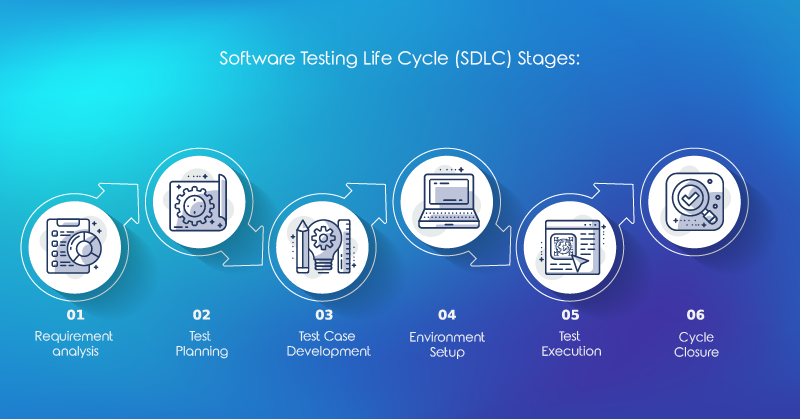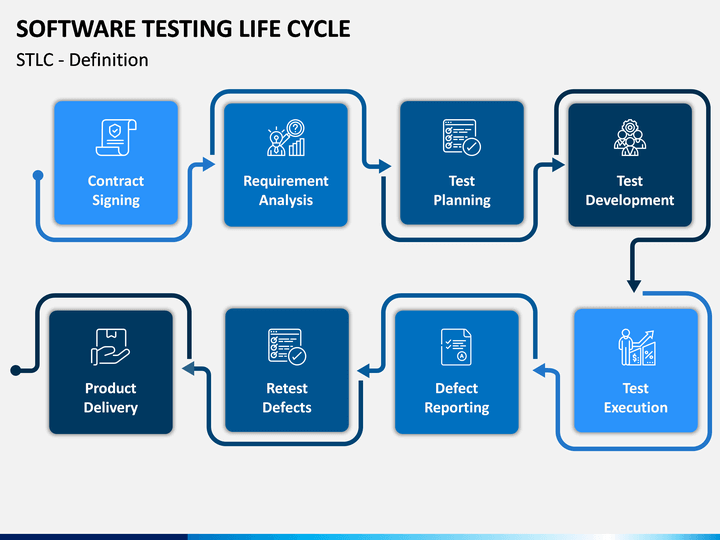The Testing Software Life Cycle. Testing software is a very complex process. There are many stages involved in testing, each of which must be properly executed. However, most software developers ignore their projects’ testing phase and go straight into release, which can lead to many problems later on.
Testing software is a key part of many projects. In this article, I’ll teach you the basics of software testing, including how to start testing, perform regression testing, and write unit tests.
Developers often overlook software testing, but ensuring a project will be built correctly is critical.
The testing phase is one of the most important steps in software development. During this stage, you’ll verify that your product meets your customer’s expectations and perform quality assurance to ensure it functions correctly.
In other words, you’ll ensure that the software works well without introducing bugs.
In this blog post, we continue our series on the testing life cycle with great tips on launching your new product, creating a growth plan, and maintaining momentum throughout your product’s lifetime.
Every software developer has a story about a product that went through a major launch and grew quickly. In this series, we’ll look at the stages of product testing and growth: launch, development, and maintenance.
Launch and growth are the two most exciting phases of software development. They can be difficult to manage, but if done correctly, they can lead to long-term success.

Designing for testing
Testing software is vital to ensuring that the project doesn’t fail. It’s also important to consider how long testing takes.
For example, the longer you test, the higher the risk that your project might fail. That’s why it’s important to try software as early as possible.
In my experience, most people test after completing their project. That means they spend time creating the project, only to discover it doesn’t work.
Testing software development is a very important step of the software development life cycle. It’s the last phase of the process and often takes the longest.
If done correctly, testing will ensure that the product is ready to launch and that the company doesn’t spend much money on features that won’t be used.
Designing for manual testing
Testing software is a big deal. There are many different types of testing, but I will talk about testing in the context of software development.
Testing aims to identify bugs, find them early, and fix them before releasing the product.
When you test, you look for errors in the code, problems in the application flow, and problems with the user experience.
Writing a blog post on testing software is a very challenging task.
First, you need to understand that many people are unfamiliar with writing about testing. In addition, you need to ensure that the information you’re providing is accurate, current, and, most importantly, actionable.

Automation
Before you write an acceptance test, you must define what the test should cover. This is the most important part of the testing process. Otherwise, you won’t know whether the test is valid or not.
The best way to define the test is to think about the user experience from the customer’s perspective. In other words, what does the customer want to achieve?
After doing this, you can start writing the test and developing some scenarios to ensure it passes. This is called a white box approach. It helps you understand how things work so you can easily spot problems in the code.
Testing in the context of software means verifying whether a piece of code works correctly. It might mean finding bugs in a program or verifying whether it behaves as intended. As you can see, the testing life cycle has many stages and much to consider.
When you test software, you often need to perform a certain number of tasks. This is called testing. In the testing process, you may need to try a piece of software alone or alongside other works.
The testing process begins with a plan specifying exactly what you intend to test and what you want to do.
Usability Testing
Software testing has been around since the beginning of time. It’s probably the most important part of the software development process.
As technology continues to advance, however, the testing process is changing. In particular, as we’ve been able to automate many of the activities involved in testing, we’re now finding new ways to test things that we couldn’t even dream of a few decades ago.
This includes software testing. While it may not be as glamorous as testing physical devices, you can still do many interesting things.
One example of testing software is creating a functional test plan. This plan is typically used to test important features.
Another example is to write a test plan for a system that multiple people will use.
The great thing about testing software is that it’s not limited to just one person. A team or a single person can use it.
Testing is crucial to the software development process. It ensures that the software works properly and meets the requirements specified by the client.
As I mentioned, you can find a lot of information about testing online, but I recommend starting with the official documentation of your favorite testing framework.

Frequently Asked Questions (FAQs)
Q: Can you describe what a test engineer does?
A: A test engineer works with developers to build and maintain tests. They are responsible for the quality of the product being made.
Q: How do test engineers stay organized?
A: In my office, I have my notebook and pencil. I carry those around, and I write down ideas in my notebook. If it is a meeting, I also take notes in my notepad. I use Trello to organize my to-do list on my computer, including bug and feature lists. I use Google Docs to track what I have done. My goal is always to have something planned.
Q: What kind of software do you write for yourself?
A: I work on mobile apps, but most of my code is JavaScript. I use JavaScript frameworks such as AngularJS.
Q: How do you choose which technology to use in your software projects?
A: I try to consider the environment where I’m developing it, the length of time the product will be used, and the speed of the technology’s evolution.
Q: Do you have any tips for choosing a new technology or language?
A: Always ask yourself why you’re using a certain technology. If you are working on a big project, you must ensure enough time to research the different technologies available. Also, I like to take advantage of the free trial versions of new technologies. You can always sign up for them and use them.
Q: Can you name one thing you like most about life in the software industry?
A: One thing I like most about my career is that I get to travel around the world.
Q: What are the three stages of the testing software life cycle?
A: There are three stages: design, build, and test. During the design stage, we create products in a computerized environment and makeensurerks. Once the plan has been approved, the software is produced. This is the most expensive stage of the process because it can cost hundreds of thousands of dollars. After the product is made, it is tested. This is when all the functionality is checked out, and bugs are found. The product is approved when the test is complete and ready for production.
Q: How long does the design phase take?
A: That depends on the complexity of the project. It could take as little as a couple of weeks, or it could take a year.
Myths About Testing Software
A testing team does software testing.
A software tester uses the testing tools.
The software testing process is done in a controlled environment.
The main goal of testing is to uncover defects at the end of the development cycle.
Testing every part of the software and every scenario it might run through is unnecessary.
It’s easy to develop an app.
There are a lot of frameworks available for this.
An app should be developed for each platform.
The test should be easy to use.
The test should be simple to learn and perform.
The test should be intuitively understandable.
The test should provide good diagnostic power.
Conclusion
The software development life cycle consists of many phases, each with its purpose and purpose.
There is no single correct path for developing a software project. Every project requires its own approach, considering the client’s specific needs, the type of product being built, and the available resources.
The software development process is designed to provide a continuous improvement loop for the project. This includes both new software features and bug fixes.
You may be asking yourself, “What is testing software?” If you’re thinking about testing software, it’s important to understand the different stages of the software development process.
This article will cover the entire testing software lifecycle, from requirements gathering and testing to deployment and support.






